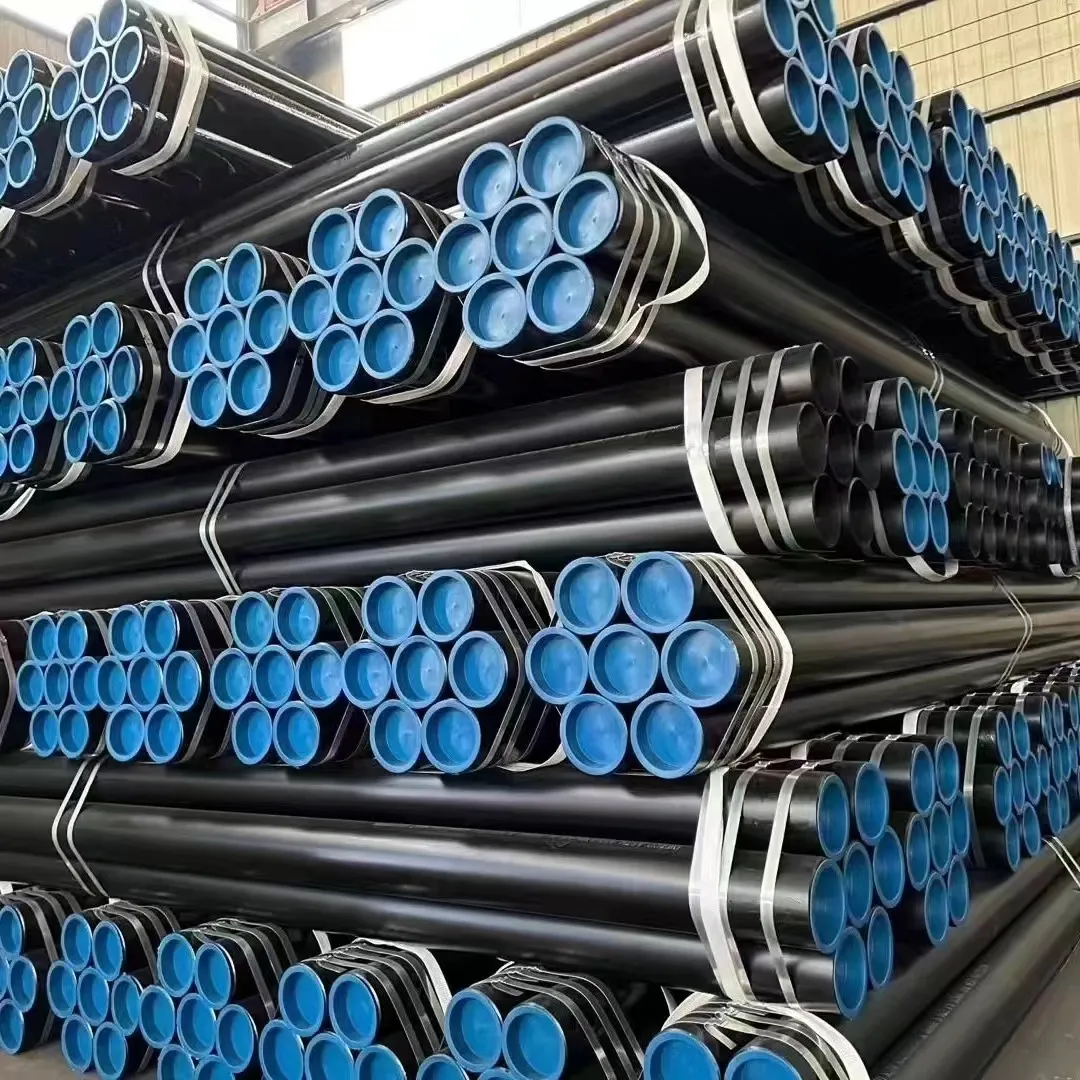Seamless Carbon Steel Tubes enforce standards
ASTM A53/A53M: Standard for welded and seamless nominal steel pipes without coating or hot-dip galvanized. Suitable for pressure piping systems, piping and general purpose pipes with temperatures below 350°C.
ASTM A106/A106M: Standard for seamless Carbon steel nominal tubes for high temperature applications. Suitable for high temperature environment, widely used in petroleum, chemical, boiler and other industries.
ASTM A210/ASME SA210: Seamless medium carbon steel tubes with minimum wall thickness for boiler tubes and boiler flue tubes, including safety ends, vault and support tubes, and superheater tubes.
ASTM A519: Standard for seamless carbon steel tubes and alloy steel tubes for machinery, automobiles and other parts.
material
American standard seamless carbon steel pipe common materials are A53 Grade A, A53 Grade B, A106 Grade A, A106 Grade B, A106 Grade C and so on.
Chemical property
A53 Grade A: Carbon content ≤0.25, manganese content ≤0.95, phosphorus content ≤0.05, sulfur content ≤0.045, copper, nickel, chromium content ≤0.4, molybdenum content ≤0.15, vanadium content ≤0.08.
A53 Grade B: Carbon content ≤0.3, manganese content ≤1.2, phosphorus content ≤0.05, sulfur content ≤0.045, copper, nickel, chromium content ≤0.4, molybdenum content ≤0.15, vanadium content ≤0.08.
A106 Grade A: Carbon content ≤0.25, Silicon content ≥0.1, manganese content 0.27-0.93, phosphorus content ≤0.035, sulfur content ≤0.035, copper, nickel, chromium content ≤0.4, molybdenum content ≤0.15, vanadium content ≤0.08.
A106 Grade B: Carbon content ≤0.3, Silicon content ≥0.1, Manganese content 0.29-1.06, Phosphorus content ≤0.035, sulfur content ≤0.035, Chromium content ≤0.4, nickel content ≤0.4, copper content ≤0.4, molybdenum content ≤0.15, Vanadium content ≤0.08.
A106 Grade C: Carbon content ≤0.35, Silicon content ≥0.1, manganese content 0.29-1.06, phosphorus content ≤0.035, sulfur content ≤0.035, copper, nickel, chromium content ≤0.4, molybdenum content ≤0.15, vanadium content ≤0.08.
-
Cangzhou Yulong Steel Co., Ltd.
-
Phone:
+86 13303177267 -
Email:
admin@ylsteelfittings.com
- English
- Arabic
- Italian
- Spanish
- Portuguese
- German
- kazakh
- Persian
- Greek
- French
- Russian
- Polish
- Thai
- Indonesian
- Vietnamese
- Zulu
- Korean
- Uzbek
- Hindi
- Serbian
- Malay
- Ukrainian
- Gujarati
- Haitian Creole
- hausa
- hawaiian
- Hebrew
- Miao
- Hungarian
- Icelandic
- igbo
- irish
- Japanese
- Javanese
- Kannada
- Khmer
- Rwandese
- Afrikaans
- Albanian
- Amharic
- Armenian
- Azerbaijani
- Basque
- Belarusian
- Bengali
- Bosnian
- Bulgarian
- Catalan
- Cebuano
- China
- China (Taiwan)
- Corsican
- Croatian
- Czech
- Danish
- Esperanto
- Estonian
- Finnish
- Frisian
- Galician
- Georgian
- Kurdish
- Kyrgyz
- Lao
- Latin
- Latvian
- Lithuanian
- Luxembourgish
- Macedonian
- Malgashi
- Malayalam
- Maltese
- Maori
- Marathi
- Mongolian
- Myanmar
- Nepali
- Norwegian
- Norwegian
- Occitan
- Pashto
- Dutch
- Punjabi
- Romanian
- Samoan
- Scottish Gaelic
- Sesotho
- Shona
- Sindhi
- Sinhala
- Slovak
- Slovenian
- Somali
- Sundanese
- Swahili
- Swedish
- Tagalog
- Tajik
- Tamil
- Tatar
- Telugu
- Turkish
- Turkmen
- Urdu
- Uighur
- Welsh
- Bantu
- Yiddish
- Yoruba

Write your message here and send it to us
Related News
-
Jul . 23, 2025Space-Saving Connection Mastery: How 1/2 Pipe Nipple’s 50mm Short Design Solves Dense Piping Installation Challenges?In the labyrinth of industrial machinery, where pipes weave through 200mm-wide gaps and every millimeter counts, the battle against cramped spaces often stalls projects.
-
Jul . 23, 2025Shale Gas Extraction Impact Resistance: How ASME B16.47 Flange's Hub-Thickened Design Passes Seismic Testing?In the high-stakes realm of shale gas extraction, where seismic activity and operational vibrations threaten pipeline integrity, the ASME B16.47 flange emerges as a critical safeguard.
















